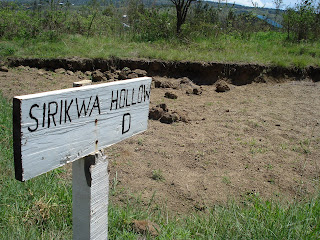


By Eric Sindabi
In the early 20s British settlers at a hill farm in Nakuru had discovered human fossils that later were to attract leading archaeologists in the world like Mr and Mrs Mary Leaky, and turn the site to be one of the most famed pre-historic archaeological sites in the world.
Hyrax hill is a small rocky lava ridge situated on the edges of Nakuru Town off the Nakuru Nairobi highway in the great rift valley of Kenya. The area measures about 500m in length and rises to about 50m above sea level.
The pre-historic site derives its name to hyrax animal species that predominantly inhabited the hill. According to biological definition an Hyrax is a small mammal of the rabbit family that live among rocks in Africa and Syria.
The animals are among the endangered species of the world.
Archaeological materials that date over 5000 years ago have been found at the site. Information ascertained from pre-historic sites can enable modern man understand the nature and way of life of pre-historic societies.
Hyrax site is one of the most crucial pre-historic sites not only in Kenya but in the whole world. It has been central to the discovery of the closest human revolution fossils for the last 100 years.
The archaeological information gathered here have helped in ascertaining knowledge of the transition from hunter/gather way of life as a survival means for the pre-historic occupants in some parts of the rift valley during the Neolithic and iron ages.
This information indicates that the people who occupied the site as a settlement area were pastoralists, hunters and gatherers who can be traced to the modern Maasai and Kalenjin ethnic groups normally described by historians as Sirikwa people
Archaeological materials like grinding stones, skeletons, skulls, iron bungles, pottery, among others have been used to draw archaeological decisions.
The hill occupants probably settled here as an ideal site to watch over advancing enemies and a strategic grazing, hunting ground and water source at the Lake Nakuru.
The National Museums of Kenya took over the site after the white settlers surrendered it to the government in 1927.
The Hyrax pre-historic site comprises of a natural environment of indigenous trees, grass, rocks, shrub and herbs. The habitat attracts a variety of bird species and other wild life species like Hyena, Snake, Hyrax, and Tortoise. Visitors at the museum can be fascinated by a tortoise pit and nature trails up the hill.
The museum gallery contains cast fossil collections art artifact collections. A magnificent view of the Lake Nakuru, Town and the Great Rift Valley is clear at the hill top.
According to the deputy curator of the Museum Mr. Peter Talam, plans are at an advanced stage to introduce a snake park and Tourist class resort centre at the site.
No comments:
Post a Comment